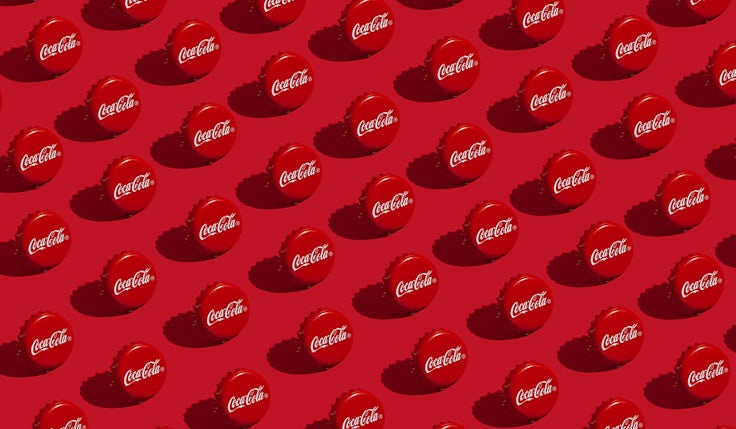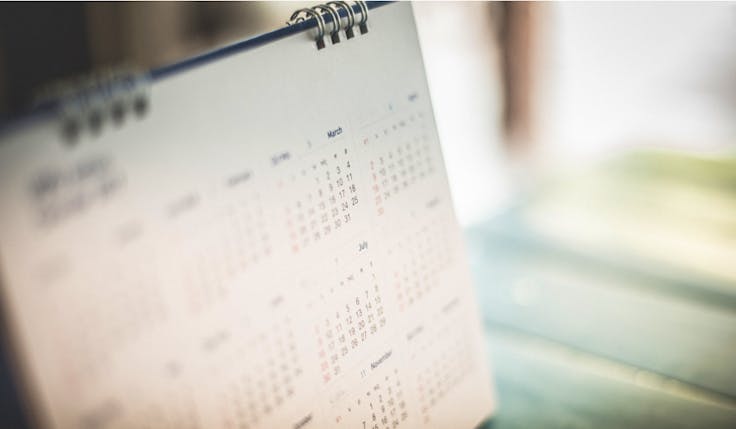The best marketing campaigns of 2024: Part 2
From Elf Beauty to Specsavers to Irn-Bru, the Marketing Week team reveals the second eight campaigns that make up our best of 2024.
 British Airways’ ‘Windows’
British Airways’ ‘Windows’
Few brands have the awareness to run an out-of-home campaign that features no logo, no slogan, no website and no call to action while still being recognised, yet British Airways proved it could do just that.
The brand’s OOH campaign ‘Windows’ features close-ups of its plane windows and passengers’ faces and aims to highlight “unique reasons for travel”.
The campaign, created by creative studio Uncommon, is part of the airline’s ongoing ‘A British Original’ platform, launched in late 2022. The platform has earned significant acclaim, winning a Grand Prix at Cannes Lions in 2023. Meanwhile, Windows earned a Gold Lion this year.
Alongside the OOH campaign, British Airways launched its first major TV campaign since 2019 as part of a larger mission to modernise the brand. The wider campaign reached 26 million adults across the UK, driving the highest ad awareness for British Airways since January 2023, up by 73% versus the year prior.
The plan to modernise the brand was underpinned by a £7bn transformation plan announced earlier this year, aiming to upgrade everything from technology and operating systems to lounges and seats over the next two years.
“It’s a real investment,” chief customer officer Calum Laming told Marketing Week in March. “This is what we’re putting the focus behind, because we recognise the need to improve and we recognise that customers have different choices of airlines to fly with.”
The investment appears to be paying off. The airline reported a 15% year-on-year profit increase, reaching €2bn (£1.7bn) for the three months ended September 2024, signalling a strong return on its ambitious strategy. GG
The best marketing campaigns of 2024: Part 1
Elf Beauty’s ‘So Many Dicks’
‘So Many Dicks’. It’s a cheeky, innuendo-filled phrase, but one that grabbed people’s attention for all the right reasons. Because, as Elf Beauty’s chief brand officer Laurie Lam told Marketing Week earlier this year, “There’s nothing dirty about it.”
Part of the cosmetics brand’s wider ‘Board Game’ initiative that urges business leaders to add more women and diverse talent to their boards, So Many Dicks draws attention to the fact there are more Richards, Ricks and Dicks on corporate boards than underrepresented groups.
While some brands might shy away from this type of activity, fearful of being accused of not practicing what they preach or not having a right to speak up, Lam says Elf is not afraid to make waves as it has nothing to hide. It is one of only four publicly traded US firms with a board of directors made up of two-thirds women and one-third diverse representation.
“[Boards] are in the highest seats of decision-making power,” she said. “If your board doesn’t reflect the community that is actually buying your products or using your services, you’re not putting things out there that are useful or have had their consideration in mind.”
So Many Dicks is a lesson in how to get purpose-fuelled campaigns right. The work hammers home an important message in a way that is in keeping with the brand’s irreverent tone of voice, while making it a key advocate for change – something which resonates well with its target audience. The campaign has also helped introduce the business to new consumers, with So Many Dicks leading to a 20% rise in brand awareness.
Campaign posts on LinkedIn hold record high impressions and engagement for both Elf Beauty and its CMO, Kory Marchisotto. So Many Dicks also increased Elf’s brand associations across a number of key measures, with an independent Harris poll finding it boosted consumers’ view of the brand as being visionary (+5.1), dependable (+5.0) and innovative (+3.0).
Overall, organic media has reached 2.3 billion impressions, with more than 446 article mentions, generating 98.3% positive sentiment.
So Many Dicks reinforces Elf Beauty’s position as a progressive, purpose-led business, and continues to be referenced by others when talking about the need for change. LT
The best marketing campaigns of 2024: Part 1
Workbooks’ ‘The No BS CRM’
The value of humour in marketing communications has been well documented, with many B2C brands eager to take advantage. But a number of B2B brands are now following suit. Take this bold campaign from Workbooks which promises users a bullshit-free CRM solution that is clean and easy-to-use without showing the product once. It also covers its stars in copious amounts of horse manure to hammer home the point.
While still early days for a campaign, which only launched in October, Workbooks has done a fantastic job in embedding the ‘No Bullshit’ line across its product and homepages, building the connection between the consumer pain point and how the brand hopes to solve it.
Not just a hunch, either, the campaign was built off solid research that shows most people were unhappy with their CRM and were looking for an alternative.
Workbooks chief marketing officer Dan Roche told Marketing Week that it needed to find a way to get across that message in a way that was “emotionally resonant” to help its voice cut through in a crowded market.
“We don’t have any competitive differentiator in terms of our product marketing,” he explained. “We believe our product is better, but there’s so much noise in the market that it’s very hard to cut through.”
It seems to have worked. Roche wrote on LinkedIn about how the campaign has driven meetings from prospects who hadn’t engaged with any of its previous work – and its OOH billboard in major stations in London and Reading have seen potential customers excited enough to book a demo.
“Through having this emotional campaign,” Roche said, “we have actually got people’s attention.” JS
The best marketing campaigns of 2024: Part 1
Specsavers’ ‘Should’ve gone…’ OOH stunts
 Specsavers has been running its wildly successful ‘Should’ve gone to Specsavers’ platform since 2012. It’s a platform that continues to go from strength to strength for the brand, consistently appearing in out-of-home settings. However, in 2024 Specsavers took it to the next level with a string of stunts that sparked mass attention and went viral online.
Specsavers has been running its wildly successful ‘Should’ve gone to Specsavers’ platform since 2012. It’s a platform that continues to go from strength to strength for the brand, consistently appearing in out-of-home settings. However, in 2024 Specsavers took it to the next level with a string of stunts that sparked mass attention and went viral online.
In March, a van parked across two bollards and lifted half into the air appeared in Edinburgh. On its rear was a sign saying ‘Book an eye test today’ alongside Specsavers’ logo. The internet went wild, media outlets picked it up rapidly, and the World Billboard Association called it “magnificent”.
A few months later, another stunt emerged, this time down under. A billboard appeared in Sydney Airport, welcoming passengers to Melbourne. Meanwhile, drivers leaving Sydney Airport were greeted by a billboard welcoming them to, you guessed it, Melbourne.
In a smaller font underneath were the words ‘Should’ve gone to Specsavers’. Again, the airport campaign garnered a lot of attention online, racking up millions of views while entertaining audiences across the globe.
It’s a lesson in consistency brands should take note of. Marketing Week columnist and Mini MBA founder Mark Ritson called the activity in Australia a “tour de force” and “creative brilliance at its best”.
“Specsavers keeps finding new ways to say the same basic thing, brilliantly,” he said. “But it’s the same, the same, the same. The key… is understanding that there is no need to change things. In fact, there is a strong argument against it.”
Specsavers’ executions also show the benefits of taking calculated risks with outdoor ads. Particularly in Australia, an emerging market for the brand, which is performing well, CMO Peter Wright told Marketing Week last month.
The ‘Should’ve gone’ platform is also having a positive impact on Specsavers’ marketing teams worldwide, he said, describing the community as “stronger and better”. MI
The best marketing campaigns of 2024: Part 1
Irn-Bru’s Euros campaign
Euro 2024 may have been won by Spain, but the battle of the football ad was very much won by Scotland. Irn-Bru and its trilogy of adverts – ‘Doctor’s’, ‘Café’ and, the best of the three, ‘Mannschaft’ – built anticipation for Scotland’s ultimately disappointing run in the UEFA football tournament in style.
Playing off the German word for team ‘mannschaft’ which has different connotations in English, the ad employed humour to great effect to drive consideration for the soft drink brand and boost revenues over the summer tournament.
The business reported stronger sales than expected in its results following the Euros, something its CEO put down to a “highly successful Euros campaign”. Irn-Bru owner AG Barr saw sales increase by 7% and year-over-year revenue rise 5% off the back of the campaign.
The ad, created with agency Leith, tested as the second-best Euros campaign (behind Paddy Power’s ‘Europe’s Favourite’) according to System1, with an impressive 5.0 stars, and racked up millions of views on TikTok and YouTube.
Kenny Nicholson, head of brand at AG Barr, told Marketing Week earlier this year it was important the soft drink brand was present at an “important cultural moment” but that it did it with the brand’s trademark sense of humour – something he says can be “uncomfortable” but helps Irn-Bru stand out.
“Everybody knows that’s the magic of Irn-Bru, its willingness to push boundaries where others might not. To play a little bit close to the edge, to be a bit cheeky and have a bit of fun,” he said. JS
The best marketing campaigns of 2024: Part 1
John Lewis’s return of ‘Never Knowingly Undersold’
‘Never Knowingly Undersold’ is one of – if not the – most recognisable price promises from a brand. It became a shortcut for trust and value. So it was surprising two years ago when John Lewis decided to retire the slogan, suggesting at the time it had become outdated and was “no longer enough to assure trust”.
But after admitting its value perceptions had been “challenged”, John Lewis made the call to resurrect the 99-year-old price pledge in September, with a revamped promise to price-match products from 25 UK retailers.
“Our perception for value has definitely been challenged, whether that’s because we’ve taken away Never Knowingly Undersold, or because we’ve gone through a cost of living crisis. But there is no doubt it is a detractor for the brand and we need to do something about it,” John Lewis customer director Charlotte Lock told Marketing Week at the time.
Indeed, a survey of 5,000 customers revealed three-quarters would feel more likely to see John Lewis as providing “good value for money” if it were to bring back a revamped version of Never Knowingly Undersold.
It’s not easy to admit taking a wrong turn, so by holding its hand up and looking to rectify the situation, John Lewis should be commended.
The return of Never Knowingly Undersold had an immediately positive impact, leading to 55,000 additional organic visits to the John Lewis website in the week that followed. John Lewis and Waitrose loyalty membership also increased by 17% and 5%, respectively, with the retailer’s executive director Peter Ruis saying it was generating “buzz” in stores.
The return of the price pledge has been supported by the retailer’s biggest-ever investment in marketing, with a trio of ads by Saatchi & Saatchi reinforcing the concept of doing things “knowingly”.
The trilogy has generated “fantastic results”, according to Lock, with organic search up 17% year on year and the retailer’s Net Promoter Score up by 10 points. The John Lewis Christmas ad ‘The Gifting Hour’ has also achieved its highest score for potential effectiveness since 2019, according to System1.
By changing customer perceptions around value and price, the retailer believes it is also now on track to hit “significantly higher profits”. LT
The best marketing campaigns of 2024: Part 1
British Heart Foundation’s ‘Streams of (un)consciousness’
 We all know how important and lifesaving CPR is. However, research by the British Heart Foundation found as many as 23 million UK adults didn’t know how to perform it.
We all know how important and lifesaving CPR is. However, research by the British Heart Foundation found as many as 23 million UK adults didn’t know how to perform it.
The charity’s research also highlighted that Gen Z had a greater interest in learning CPR than older generations, with 67% of 16- to 26-year-olds in the UK having been trained in CPR. But how to target those who hadn’t?
‘Stream of (un)consciousness’, created with PHD, saw the British Heart Foundation partner with 14 popular Twitch gamers to encourage Gen Z to take part in its 15-minute RevivR CPR training. On the same day, at exactly the same time, all the streamers’ broadcasts were abruptly interrupted by a flatlining heart monitor. The interruption was followed by cardiac arrest statistics and information on how viewers could learn CPR with the free RevivR tool.
The activation also included a Twitch UK homepage takeover by the British Heart Foundation, with some streamers carrying out live CPR training demonstrations.
The campaign reached 714,620 viewers, according to the British Heart Foundation, with a subsequent survey finding 84% of viewers were ‘very likely’ to learn CPR through the RevivR training as a result.
The campaign had an immediate impact too. Weeks after the campaign, one of the streamers’ followers revealed the CPR segment saved his two-year-old niece’s life.
The campaign’s real-world impact also led to the British Heart Foundation winning the 2024 Marketing Week Award for Best Use of Influencers. MI
The best marketing campaigns of 2024: Part 1
Cruzcampo’s ‘Choose to Cruz’
Having seen strong success already in the on-trade, Heineken invested in the newly-launched Cruzcampo brand to accelerate its growth in the UK.
The Spanish lager brand first came to the UK in 2023. It launched into a highly competitive European lager segment in the market, yet managed to have an extremely successful first few months, without any above-the-line media spend. Based on value sales, Cruzcampo was the biggest brand to launch into the category since 2007.
This year, parent company Heineken looked to build on that extremely successful introduction by investing in a major campaign.
Working with creative agency Lucky Generals, it launched a £10m campaign, which included a TV ad, out-of-home activations, influencer activity and below-the-line activation in the on- and off-trades.
In a crowded lager category, a key goal of the campaign had to be ensuring Cruzcampo stood out against its competitors. As a new brand, it was also seeking to drive awareness among consumers through the campaign.
It looks like the multimillion-pound campaign is having the desired effect of helping Cruzcampo stand out from its competitive set since it was launched in April.
In Heineken’s quarter three results in October, Cruzcampo was highlighted by the group’s leadership as driving “strong growth” across the company’s portfolio of mainstream brands, suggesting its advertising has helped to maintain impressive momentum. NC
It’s now down to you to vote for your favourite to help us crown Marketing Week readers’ campaign of the year. Place your votes in the first round here.
 British Airways’ ‘Windows’
British Airways’ ‘Windows’





